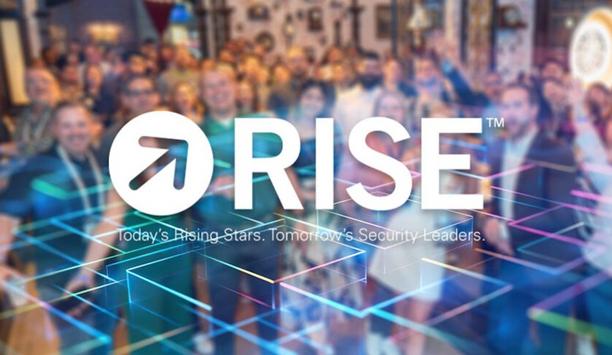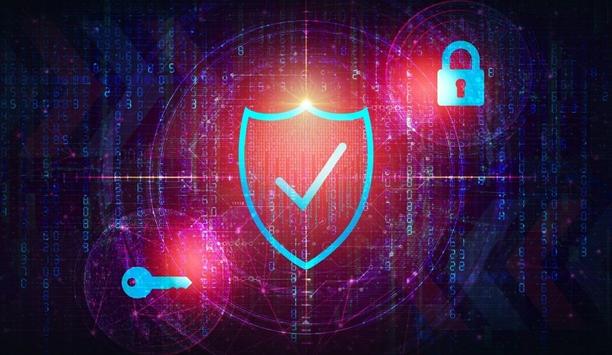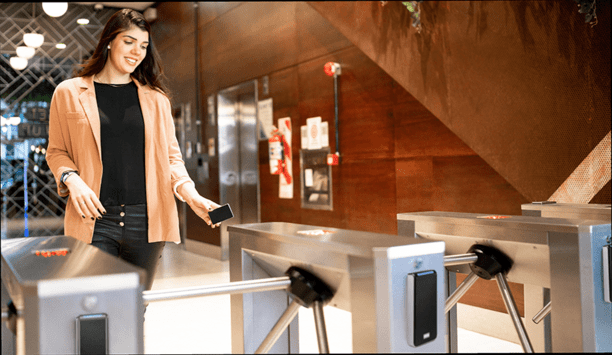Boon Edam - Experts & Thought Leaders
Latest Boon Edam news & announcements
Boon Edam Inc., a global pioneer in physical security entrance products, is raising the bar for security entrances at ISC West 2025. Unveiling the latest advancements and expanded service offerings at stand #23075. This year’s showcase includes expanded service offerings, advanced entrance solutions, and new technology integrations that reinforce Boon Edam’s commitment to securing facilities across industries. Building resilient security solutions “At Boon Edam, we recognise that security isn’t just about solutions—it’s about partnerships. At ISC West, we’re showcasing our commitment to customer-driven innovation with entrance solutions designed to address evolving threats, backed by the expert service and support our customers depend on,” said Patrick Nora, President and Managing Director, Boon Edam. “We invite attendees to visit our booth to discover how we can help build a comprehensive and resilient security strategy.” Innovating access control solutions Boon Edam will have these secured entry solutions on display at ISC West stand #23075: Speedlane compact optical Turnstile with Alcatraz AI Rock X The Speedlane Compact is a space-efficient optical turnstile that delivers seamless security while preventing unauthorised access. At ISC West, it will be demonstrated with Alcatraz AI’s Rock X, providing frictionless, hands-free identity verification authentication through advanced facial authentication recognition. Tourlock 180 security revolving door with dual biometric options Tourlock 180 is a high-security revolving door designed to eliminate tailgating and ensure only one authorised person can enterThe Tourlock 180 is a high-security revolving door designed to eliminate tailgating and ensure only one authorised person enters per cycle. It is being showcased with two biometric integration options: Alcatraz AI's Rock X on one side and the new Iris ID iA1000 on the other, demonstrating flexible high-security solutions for different authentication preferences and requirements. The Rock X provides frictionless facial authentication recognition with tailgating detection, while the iA1000 delivers highly accurate iris and facial recognition for environments requiring enhanced security protocols. Circlelock Solo Interlocking Portal with Alcatraz AI Rock The Circlelock Solo offers the highest level of unmanned entrance security, using an interlocking system to allow only one person to pass through at a time. The portal will feature Alcatraz AI’s Rock facial authentication recognition technology, reinforcing its role in high-security, multi-factor authentication environments. Turnlock 150 Full-Height Turnstile with BE secure Turnlock 150 delivers robust, full-height access control for indoor and outdoor applicationsThe Turnlock 150 delivers robust, full-height access control for indoor and outdoor applications. Now featuring the integrated BE Secure system, it leverages advanced Time-of-Flight (TOF) and AI technology to detect and prevent piggybacking. When two individuals attempt to enter with a single credential, the system automatically locks the turnstile, ensuring that only one person passes at a time. Lifeline Speedlane Swing Optical Turnstile The Lifeline Speedlane Swing is the slimmest optical turnstile available, offering a sleek, space-saving design without compromising security. Its swinging glass barriers and intelligent sensors provide accurate tailgating detection and intelligent user guidance for smooth, secure entry. Expanded service and support offerings Beyond product innovations, Boon Edam is enhancing its service offerings to help customers maximize the performance and longevity of their security entrances. Representatives from the company’s Service team will be available on-site to discuss new maintenance and support programmes, offering tailored solutions to meet the specific needs of each facility. Boon Edam will also host a happy hour at its stand #23075 on Wednesday and Thursday from 3:00 to 5:00 p.m., offering attendees an opportunity to network, discuss industry trends, and explore the latest in secured entry solutions.
The Security Industry Association (SIA) has named new members and leadership of the steering committee for SIA RISE, a community that fosters the careers of young professionals and emerging pioneers in the security industry. Dakota Mackie of Northland Controls serves as chair, with Kelly Ann Christensen of BCD now serving as vice chair. In these roles, Mackie and Christensen ensure that RISE delivers educational content and networking opportunities to young professional employees and rising stars at SIA member companies, college students and recent graduates interested in the global security industry. Prior roles of Mackie Mackie joined Northland Controls in 2020 as the content marketing specialist Dakota Mackie is the business development manager at Northland Controls. Prior to joining the security industry, she worked as a client services coordinator at the Washington Commanders (then the Washington Redskins) before beginning a role with a military nonprofit, Luke’s Wings, where she ultimately ended her tenure as the executive director. Mackie joined Northland Controls in 2020 as the content marketing specialist, and in her current role, she is responsible for supporting the entire sales cycle with a focus on the growth of Northland’s managed services offering. Mackie has been honoured as a SIA Women in Security Forum Power 100 honouree and is a graduate of the University of South Carolina. Outside of work, she has a passion for travelling the world and learning about new cultures. Prior roles of Ann Christensen Kelly Ann Christensen is a digital marketing specialist at BCD, an IP video data infrastructure manufacturer, and has spent nearly five years specialising in the security industry. With a focus on digital advertising and marketing analytics, she has certifications in ROI marketing, marketing management, SEO and PPC marketing. Prior to becoming RISE vice chair, she served as head of the RISE Scholarship subcommittee, which provides scholarships to young professionals in the security industry to assist with furthering education, attending industry events, obtaining new certifications and furthering their professional development, and was awarded the SIA RISE Scholarship in 2022 and one of SIA’s 2024 Sandy Jones Volunteers of the Year. Christensen has also participated in SIA’s Talent Inclusion Mentorship Education (TIME) program, which is designed to promote diversity, equity, inclusion and empowerment of underrepresented identities in the security industry by creating a well-defined pathway for learning and development. SIA RISE Steering Committee The SIA RISE Steering Committee now includes the following members: Chair: Dakota Mackie, business development manager, Northland Controls (Term ends 2025) Vice Chair: Kelly Ann Christensen, marketing manager, BCD (Term ends 2027) AcceleRISE Subcommittee Chair: Erin Grippo, senior manager, product operations, Brivo (Term ends 2025) Content Subcommittee Chair: Tanner LaRocque, marketing director, Evolon (Term ends 2026) Scholarship Subcommittee Chair: Kristin Shockley, manager, segment marketing, Genetec (Term ends 2026) Diversity, Equity & Inclusion Subcommittee Chair: Tristin Vaccaro, owner, Vaccaro Copywriting & Marketing Solutions (Term ends 2025) Jonah Azarcon, deputy project pioneer, M.C. Dean (Term ends 2027) Krystina Beach, marketing communications manager, ASSA ABLOY (Term ends 2027) Andres Capous, regional sales manager, Velasea (Term ends 2027) Joey Joy, distribution channel account manager, March Networks (Term ends 2027) Ryan Knoll, business relations manager, Pro-Tec Design (Term ends 2027) Tim Loth, sales engineer team lead, i-PRO (Term ends 2026) Jackie Paryz, director, sales, technology solutions, Securitas (Term ends 2027) Itzel Portillo, marketing specialist, Allegion (Term ends 2027) Amanda Powell, marketing manager, Boon Edam (Term ends 2025) Nicole Rigby, team lead, distribution operations, Axis Communications (Term ends 2026) Keyser Santana, global security strategist and business execution senior manager, Pratt & Whitney (Term ends 2025) Constantine Tremouliaris, integrated solutions specialist, ASSA ABLOY (Term ends 2025) KeShia Thomas, brand and solutions manager, Allegion (Term ends 2027) Mfon Ubaha, business development manager, i-PRO (Term ends 2027) Sarah Webel, human resources generalist, SAGE Integration (Term ends 2027) Lauren Yonis, global events manager, acre (Term ends 2027) New RISE committee members “SIA RISE is a vibrant community of accomplished young security pioneers and driven industry newcomers that offers a robust array of opportunities for learning, professional development, engagement and relationship building in our industry. This community and its meaningful initiatives would not be possible without our dedicated, talented volunteers, like RISE chair Dakota Mackie, new vice chair Kelly Ann Christensen and our subcommittee chairs, Erin Grippo, Tanner LaRocque, Kristin Shockley and Tristin Vaccaro,” said SIA CEO Don Erickson. “We welcome our new RISE committee members, and we thank outgoing committee members and past RISE chairs Jake Brown and Matt Feenan for their leadership and support over the years. We look forward to working together with the 2025 RISE committee to further advance the reach and impact of RISE and its programs and propel the security workforce of the future.” RISE Awards and annual AcceleRISE conference SIA RISE is a community that fosters the careers of young professionals in the security industry. SIA RISE’s offerings include an annual scholarship to further young talent’s education and career goals, fun in-person and virtual networking events for young professionals, the TIME program for early and mid-career professionals, recognition of new and emerging industry pioneers through the 25 on the RISE Awards and the annual AcceleRISE conference – an essential experience for young security talent. The SIA RISE community is open to all employees at SIA member companies who are young professionals under 40 or have been in the security industry for less than two years.
Boon Edam Inc., a global pioneer in physical security entrance products, announces the launch of its innovative Speedlane Compact Platform. This modular platform, designed for the Lifeline Speedlane Compact Optical Turnstile, offers a groundbreaking solution for facilities seeking advanced entry control while preserving existing floors. Modern entry solutions “Preserving architectural integrity is a priority for many historical and high-design buildings,” said Patrick Nora, President and Managing Director, of Boon Edam Inc. “The Speedlane Compact Platform allows us to meet these needs, offering modern entry solutions that adapt to spaces without requiring invasive and costly floor modifications.” Speedlane Compact Platform The platform supports a weight capacity of 500 lbs per square foot for high stability and features integrated conduits The Speedlane Compact Platform addresses the unique challenges of facilities where trenching or drilling into floors is restricted or undesirable. With a free-standing, modular design, the platform offers an ADA-compliant foundation that ensures accessibility in high-traffic environments without compromising structural integrity. The platform supports a weight capacity of 500 lbs per square foot for high stability and features integrated conduits to accommodate streamlined power and low-voltage wiring. Custom finishes, such as anti-slip coatings and stainless-steel tread plates, are also available to align with various aesthetic and functional needs. Modular configurations Boon Edam’s commitment to innovation is evident in the platform’s adaptability. Its modular configurations can accommodate single or multi-lane setups and seamlessly integrate with additional entry solutions like Winglock Swing gates. The innovative and versatile Speedlane Compact Platform allows modern secured entry solutions to be installed in spaces ranging from historical landmarks to new state-of-the-art facilities. Seamless experience “Our platform is not only about innovation. It’s also about offering a seamless experience for architects, facility managers, and end users alike,” Nora added. “With this launch, Boon Edam sets a new standard for adaptive and non-invasive entry solutions, ensuring that both historic and modern spaces can thrive without compromise,” concluded Nora.
Insights & Opinions from thought leaders at Boon Edam
In the competitive world of physical access control, Big Tech companies are seeking to play a larger role. Physical access competition Apple Wallet continues to stake its claim on mobile credentialing. Amazon One Enterprise is pushing a palm-based identity service. Google/Nest offers smart locks for home access control, with identity and access management provided in the Google Cloud. The entry of these big companies in the historically fragmented physical access control market is causing disruption and foreboding new levels of competition. Apple Wallet impacting credentialing trends The popularity of mobile wallets and contactless technologies in general has grown, creating more demand At Apple’s Worldwide Developer Conference in June 2021, the company announced support for home, office and hotel keys, including corporate badges and student ID cards, in Apple Wallet. Later, the company announced Hyatt as the first hotel partner to support the technology. Since then, the popularity of mobile wallets and contactless technologies in general has grown, creating more demand for a seamless solution such as Apple Wallet. Easy access In 2023, HID Global announced the availability of their employee badge in Apple Wallet, allowing staff and guests to easily access corporate spaces with their iPhone or Apple Watch, including doors, elevators, turnstiles, etc. Employees just need to hold their iPhone or Apple Watch near the reader to unlock. Factors affecting the rate of adoption However, implementing and maintaining an Apple Wallet-based access control system can incur costs for hardware updates, software licencing, and ongoing maintenance. Factors affecting the rate of adoption include the need to upgrade existing infrastructures to accommodate the technology, and the necessity for access control manufacturers to develop and implement integrations with Apple Wallet. Benefits of adoption Keys in Apple Wallet take full advantage of the privacy and security built into the iPhone and Apple Watch With larger companies leading the way, some smaller ones might take longer to catch up. There is also a need to educate building owners and administrators to see the value and benefits of switching to Apple Wallet-based access control. Convenience and greater security can accelerate adoption. Keys in Apple Wallet take full advantage of the privacy and security built into iPhone and Apple Watch. Sensitive data protection A compatible app, specific to the building’s access control system, is needed. Once added, credentials are securely stored in the iPhone's Secure Enclave, a dedicated hardware chip designed for sensitive data protection. Holding an iPhone near an NFC-enabled reader enables transmission of encrypted credentials. In addition to Near Field Communication (NFC), some systems also utilise Bluetooth Low Energy (BLE) for added security, longer read range, and hands-free unlocking. Phones need sufficient battery charge to function. Amazon One Enterprise Enables Palm-Based Biometrics In November 2023, Amazon Web Services Inc. (AWS) announced an identity service providing comprehensive and easy-to-use authentication for physical and digital access control. The system enables users to employ their palm as an access control credential, allowing organisations to provide a fast and contactless experience for employees and others to gain access to physical locations as well as digital assets. Physical and digital locations Physical locations include data centres, office and residential buildings, airports, hotels, resorts Physical locations include data centres, office and residential buildings, airports, hotels, resorts, and educational institutions. IT and security administrators can easily install Amazon One devices and manage users, devices, and software updates using AWS’s Management Console. Elimination of physical credentials An advantage of the Amazon approach is the elimination of physical credentials such as fobs and badges, and digital elements such as personal identification numbers (PINs) and passwords. AWS says security is built into every stage of the service, from multi-layered security controls in the Amazon One device, which is the same technology used in the Amazon Go retail stores, where shoppers can pay for purchases by scanning the palm of their hands. The devices combine palm and vein imagery for biometric matching and deliver an accuracy rate of 99.9999%, which exceeds the accuracy of other biometric alternatives, says the company. AI and ML The palm-recognition technology uses artificial intelligence and machine learning to create a “palm signature” that is associated with identification credentials such as a badge, employee ID or PIN. Boon Edam, a revolving door and turnstile manufacturer, offers Amazon’s palm biometric technology on its equipment, and IHG Hotels & Resorts uses the technology to provide employees a convenient way to identify themselves and gain access to software systems. Google and Nest Devices in Access Control When the Nest × Yale Lock is connected to the Nest app, a resident can unlock a door from their phone Google’s Nest devices include smart locks for home access control. The Google Nest × Yale Lock allows access control via both physical keys and passcodes accessible through the Google Home app. When the Nest × Yale Lock is connected to the Nest app, a resident can unlock a door from their phone. Passcodes can be created for family, guests, and other trusted persons. Alerts can be provided whenever someone unlocks and locks the door. When Nest “knows” a resident is away, the door can lock automatically. Voice control, Google Home app Voice control, using Google Assistant integrated with various Nest devices, enables use of voice commands to lock and unlock doors, thus adding another level of convenience. Smart home devices from various manufacturers can be controlled through the Google Home app. SMART Monitoring ADT’s Self Setup smart home security systems integrate Google Nest smart home products with ADT security and life safety technology, including SMART Monitoring technology. Microsoft Azure is another company that could impact access control. The Microsoft Azure Active Directory is an identity and access management platform that could be extended to physical access control, leveraging existing user credentials. Long-Range Impact on the Security Marketplace Big Tech companies are creating platforms for managing access control data, integrating with other security systems Increasingly, Big Tech companies are creating platforms for managing access control data, integrating with other security systems, and offering analytics for optimising security and building operations. Big Tech is also actively researching and developing new technologies for access control, such as facial recognition, voice authentication, and AI-powered anomaly detection. Access control communication and integration As their involvement in physical access control grows, Big Tech companies could potentially gain more influence in setting industry standards for access control communication and integration, similar to how they have become dominant in other areas such as mobile platforms. Given their expertise in user interface design and data analysis, Big Tech companies could help to direct how future access control systems are managed and how users interact with them, including more intuitive and user-friendly operations. Future of physical access control Existing concerns about privacy, security, and potential dominance by a few Big Tech companies could spill over into physical access control. However, traditional security companies, startups, and industry consortiums are also actively developing innovative solutions. Ultimately, the future of physical access control will likely be shaped by a combination of many different players and technologies – large and small.
Close collaboration with customers has been a hallmark of the physical security industry for decades. And yet, less ability to collaborate face-to-face to discuss customer needs has been a consequence of the COVID-19 pandemic. “True innovation, which comes from close collaboration with customers, is more difficult to achieve remotely,” said Howard Johnson, President and COO, AMAG Technology, adding “Not being able to visit in person has not been helpful. Kurt John, Chief Cyber Security Officer at Siemens USA, adds “We need to plan intentionally with a strategic approach for collaboration and innovation.” Securing New Ground virtual conference Security experts from three manufacturers reflected on the impact of COVID-19 on the physical security industry Security experts from three manufacturers reflected on the impact of COVID-19 on the physical security industry at a ‘View from the Top’ session, during the Securing New Ground virtual conference, sponsored by the Security Industry Association. Their comments covered business practices during the pandemic and the outlook for technology innovation in response. “We had to pivot quickly on business models and create a cross-portfolio team task force to discuss how we can leverage technologies to help customers [during the pandemic],” said John, adding “We are having outcome-based conversations with customers about their businesses and operations, and how we can combine short-term benefits with long-term growth and flexibility.” But some of those conversations are happening from a distance. Results-oriented approach in remote work environment After the pandemic took hold, Siemens shifted rapidly to remote work and embraced other infrastructure changes. “We had to refocus and lead with empathy, flexibility and trust,” said John, adding “We gave our staff flexibility to set their hours and used a results-oriented approach.” There is also a social element missing in the work-from-home model. “Virtual coffee machines do not replace being there in person,” said Pierre Racz, President and CEO, Genetec, adding “Small talk about the weather is important psychological elements.” Positives in using multi-factor identity management He predicts that, in the future, office hours may be reduced, but not floor space, with space needed for in-person collaboration and long-term social distancing. Employees will come to the office to do collaborative work, but can work from home to accomplish individual tasks that may be ‘deferred’ to after-hours, when the kids have been fed. When the pandemic hit, Genetec had resumed 95% of their operations within 36 hours, thanks to their use of multi-factor identity management. They did not suffer from malware and phishing issues. “Multi-factor is really important so that well-engineered phishing campaigns are not successful,” said Pierre Racz. Shift to ‘Zero Trust’ model All three panelists noted a coming skills gap relating both cyber security and systems integration Remote working technologies are shifting to a ‘zero trust’ model, in which access to systems is granted adaptively based on contextual awareness of authorised user patterns based on identity, time, and device posture. For example, an office computer might have more leeway than a home computer and a computer at Starbucks would be even less trusted. The approach increases logical access security while providing users their choice of devices and apps. Skills gap in cyber security and systems integration A growing skills gap has continued throughout the pandemic. “Where we have vacancies, we have struggled to find candidates,” said Howard Johnson. All three panelists noted a coming skills gap relating both cyber security and systems integration. New technologies will clearly require new skills that may currently be rare in the workforce. Cyber security will become even more important with growth in new technologies such as AI, machine learning, 5G and edge computing. A workforce development plan is needed to address the technologies and to enable companies to pivot to new business needs, said John. Adoption of temperature sensing solutions From a technology viewpoint, Johnson has seen attention shift to the reception area and portal, away from touch technologies and embracing temperature sensing as a new element. There have also been new requests for video and audio at the portal point, to create methods of access and egress that do not require security personnel to be present. “Some customers are early adopters, and others are waiting for the market to mature before investing,” Howard Johnson said. “Security companies have been faced with the need to respond rapidly to their customers’ needs during the pandemic, but without seeming like ‘ambulance chasers’,” said Pierre Racz. In the case of Genetec, the company offered new system capabilities, such as a 'contamination report', to existing customers for free. Move to a hybrid and flexible work environment In the new normal, the pendulum will swing back to the middle with more flexibility and a hybrid approach" An immediate impact of the pandemic has been a reduction in required office space, as more employees have worked from home, raising questions about future demand for office space. “The pendulum tends to swing to the extremes,” said Kurt John, adding “In the new normal, the pendulum will swing back to the middle with more flexibility and a hybrid approach.” “Users will be much more careful about letting people into their space, which requires more policies and procedures,” said Lorna Chandler, CEO, Security by Design, who participated in a panel at Securing New Ground about how the pandemic is changing commercial architecture and access control. “Users should also be careful in the rush to secure premises from COVID-19 that they don’t violate HIPAA laws or create other potential liabilities,” adds Chandler. Continuum of mechanical and electromechanical devices Mark Duato, Executive Vice President, Aftermarket, ASSA ABLOY Opening Solutions, said a “Continuum of mechanical and electromechanical devices is needed to protect premises and ensure convenient operation of an access control operation.” “First and foremost, the immediate reaction to the impact of COVID-19 is to rush to educate and invest in technologies to increase the ability to analyse people,” said Duato, who also participated in the access control panel. Shift to touchless, frictionless access control “The move to touchless, frictionless access control “is really a collaboration of people, process and technology,” said Valerie Currin, President and Managing Director, Boon Edam Inc., adding “And all three elements need to come together. Touchless and frictionless have been in our market for decades, and they’re only going to become heightened and grow. We’re seeing our business pivot to serve markets we have not served in the past." More and more data is a feature of new systems, but is only helpful when it is analysed. “We all live in a world of data, or IoT and sensor technology,” said ASSA ABLOY’s Mark Duato, adding “But we don’t want to be crushed by data. Data is only helpful when you can reduce it to functional benefits that will help us innovate. We have to take the time to squeeze the value out of data.”
Serving customer needs is the goal of most commerce in the physical security market. Understanding those needs requires communication and nuance, and there are sometimes surprises along the way. But in every surprising revelation – and in every customer interaction – there is opportunity to learn something valuable that can help to serve the next customer’s needs more effectively. We asked this week’s Expert Panel Roundtable: what was the best lesson you ever learned from a security end user customer?
Using artificial intelligence (AI) to automate physical security systems
DownloadA modern guide to data loss prevention
Download7 proven solutions for law enforcement key control and asset management
DownloadThe truth behind 9 mobile access myths
DownloadAccess control system planning phase 2
Download





















































